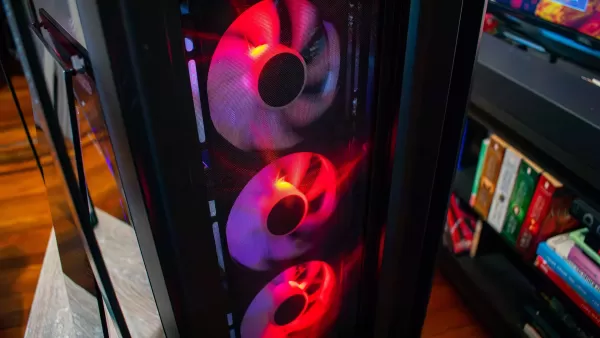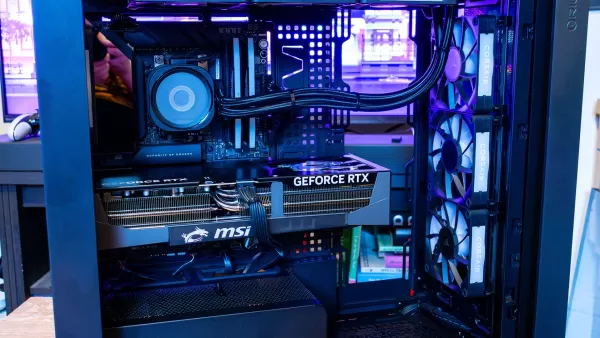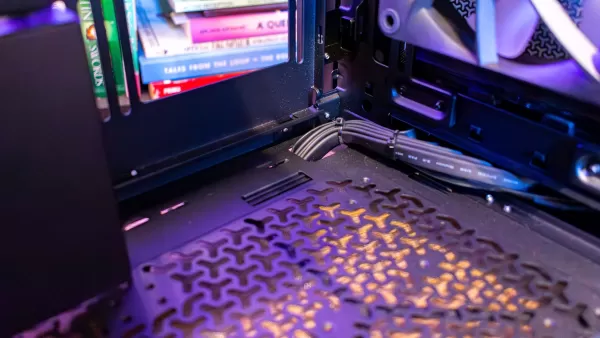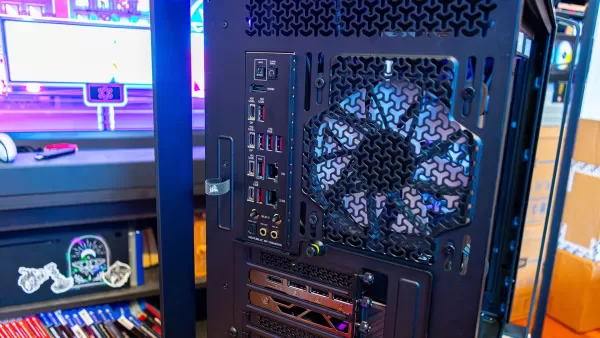Millennium PC: A Comprehensive Review
When you’re in the market for a gaming PC, you're faced with a variety of options. You could opt for a mass-produced prebuilt system from brands like Alienware, or go for a premium boutique build. The Origin Millennium strikes a unique balance, offering a high-end gaming experience without the extravagant design flair of competitors like Maingear or Falcon Northwest.
The Origin Millennium is a top-tier custom gaming rig that uses standard components. It's something you could theoretically assemble yourself, but without the hassle of managing cables and dealing with the intricacies of building. And yes, you might find yourself wrestling with a hefty wooden crate to get it into your home, as I did.
Purchasing Guide
The Origin Millennium starts at $2,788, but that's for a basic setup with an Intel Core i5-14600K and no dedicated graphics card, which hardly justifies the cost. Fortunately, you can customize the system on Origin's website with a range of components. Just remember, the more powerful the configuration, the higher the price tag.
Origin Millennium – Photos
Design and Features
The Origin Millennium is a large full-tower ATX case, further accentuated by steel bars on all four corners, making it even more imposing. The case alone weighs 33 pounds, and that's before you add in heavy-duty components like the MSI RTX 5090 Gaming Trio, a robust power supply, and a 360mm AIO. Combined with the wooden crate it arrives in, moving this beast into a third-floor walkup is no small feat.
The steel bars add a unique challenge when accessing the internals. While my review unit is set for years without upgrades, routine maintenance still requires access. The metal bar on the back left corner complicates removing the glass side panel, which I discovered when I had to remove a styrofoam insert. Although the bars can be removed with allen bolts, it's an extra step that shouldn't be necessary.
Internally, the system is spacious with excellent airflow, even accommodating a massive 14-inch graphics card. Origin's cable management is top-notch, with all cables neatly arranged behind the motherboard tray and routed through grommets. However, the decision to route fan and front panel wires underneath the case, outside the computer, is unusual. It's a mixed bag of genius cable management and potential hazard if the wires snag on something.
You can choose to have the front ports and power button mounted on the top or bottom of the case. My review unit had them on the bottom, ideal for desk placement, but the top mount option is great for those placing the PC in a living room or under a desk.
The front panel features four USB-A and one USB-C port, supplemented by ample rear connectivity on the Asus ROG Crosshair X870E Hero motherboard. This includes four USB-C ports, six USB-A ports, two Ethernet ports, and an HDMI port for onboard graphics. The RTX 5090 adds three DisplayPort and one HDMI, standard for Blackwell GPUs.
All in the Configuration
The configuration I tested might be overkill for most users, but Origin PC allows you to tailor your system to your needs. The high-end setup, priced at $7,241, ensures longevity, but a more balanced build with an AMD Ryzen 5 9600X, 32GB of RAM, and an AMD Radeon RX 9070 XT, priced at $3,392, still offers robust 4K gaming performance.
If you were to build the mid-range version yourself, you'd spend around $2,397, which means you're paying about a thousand dollars for Origin's assembly service. For the high-end configuration, building it yourself would cost approximately $6,506 on PCPartPicker.
The premium for assembly includes a standard one-year warranty and lifetime support from Origin. They'll even upgrade your system for free if you supply the parts, and the unique wooden crate shipping method ensures maximum safety, albeit at an increased shipping cost.
Whether the added cost is worth it depends on your comfort level with PC building and maintenance, as well as your time valuation. Origin's cable management expertise is certainly a plus.
Performance
The Origin Millennium I received from Corsair featured an Nvidia GeForce RTX 5090, an AMD Ryzen 7 9800X3D, and 64GB of RAM, making it a powerhouse for gaming. Testing at 4K, nearly every game exceeded 100 fps without frame generation. Only two games fell short: Assassin's Creed Shadows at 75 fps and Metro Exodus at 97 fps, the latter being a demanding ray-traced workload.
Assassin's Creed Shadows' 75 fps is still highly playable, and enabling frame generation boosts it to 132 fps, though with increased latency from 33ms to 42ms. In Cyberpunk 2077, the Ray Tracing Ultra preset with DLSS in performance mode delivered 127 fps at 23ms latency. With Multi-Frame Generation set to 4x, the frame rate soared to 373 fps, with latency only rising to 28ms, surpassing what my 240Hz monitor can display.
Even without frame generation, the Origin Millennium's performance is stellar, allowing you to enjoy games at high frame rates without sacrificing image quality.
-
 Mar 17,25All Split Fiction Achievements & How to Unlock Them Dive into the captivating co-op adventure Split Fiction from Hazelight Studios! This guide outlines every achievement, ensuring you and your partner conquer every challenge. While some trophies are earned naturally through the story, many require thorough exploration and unique actions. Use this g
Mar 17,25All Split Fiction Achievements & How to Unlock Them Dive into the captivating co-op adventure Split Fiction from Hazelight Studios! This guide outlines every achievement, ensuring you and your partner conquer every challenge. While some trophies are earned naturally through the story, many require thorough exploration and unique actions. Use this g -
 Mar 19,25How Does Dragon Ball Daima’s Finale Explain Goku Never Using Super Saiyan 4 in Super? The climactic battle in Dragon Ball Daima's finale pits Gomah against Goku, showcasing Goku's newly acquired form. This episode naturally led many fans to anticipate an explanation for Super Saiyan 4's absence in Super. So, how does the finale address this?In episode 19, after Glorio's wish restore
Mar 19,25How Does Dragon Ball Daima’s Finale Explain Goku Never Using Super Saiyan 4 in Super? The climactic battle in Dragon Ball Daima's finale pits Gomah against Goku, showcasing Goku's newly acquired form. This episode naturally led many fans to anticipate an explanation for Super Saiyan 4's absence in Super. So, how does the finale address this?In episode 19, after Glorio's wish restore -
 Jan 16,25Girls' Frontline 2: Exilium Tier List Released Another free-to-play gacha game, another character ranking to guide your investment choices. This Girls’ Frontline 2: Exilium character tier list helps you prioritize which characters are worth your resources. Girls’ Frontline 2: Exilium Character Tier List Here's a breakdown of currently available
Jan 16,25Girls' Frontline 2: Exilium Tier List Released Another free-to-play gacha game, another character ranking to guide your investment choices. This Girls’ Frontline 2: Exilium character tier list helps you prioritize which characters are worth your resources. Girls’ Frontline 2: Exilium Character Tier List Here's a breakdown of currently available -
 Mar 18,25Avowed Best PC Settings for Max FPS *Avowed*, a visual masterpiece, immerses you in a richly detailed world. To fully appreciate its stunning graphics without sacrificing performance, optimizing your PC settings is key. This guide helps you strike the perfect balance between breathtaking visuals and smooth gameplay.Recommended Videos
Mar 18,25Avowed Best PC Settings for Max FPS *Avowed*, a visual masterpiece, immerses you in a richly detailed world. To fully appreciate its stunning graphics without sacrificing performance, optimizing your PC settings is key. This guide helps you strike the perfect balance between breathtaking visuals and smooth gameplay.Recommended Videos






